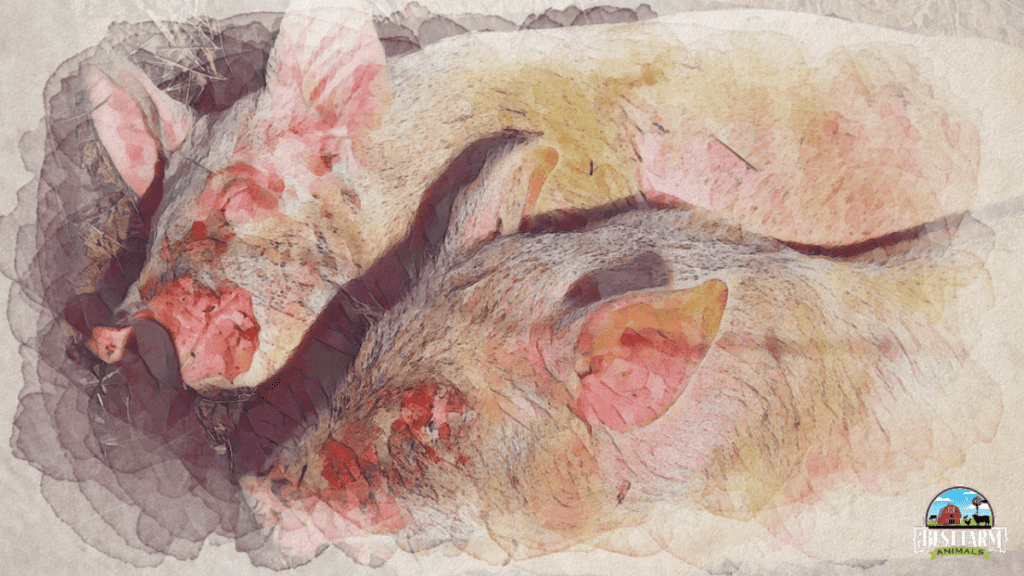Typically, when I call my pigs for their meal, they eagerly rush over to eat. However, on this occasion, one of my pigs remained lying on the ground, trembling and reluctant to move. It immediately caught my attention because a pig rarely refuses a meal unless there is an issue.
I was concerned that the pig might have a torn ligament, although I was also aware that Porcine congenital splay leg syndrome could be a probable cause.
Torn ligaments or tendons are common traumas that occur in pigs, and these traumas affect sows and gilts more often. Factors that cause torn ligaments are fighting, weak bones, slipping on wet floors, and splay leg syndrome.
This condition occurs when the muscle or tendon is torn away from the bone and affects pigs’ elbows, knee joints, and hips.
Signs of Torn Ligaments or Tendons
Pigs that cannot stand, appear lame, refuse to move, shiver uncontrollably, have lousy coordination, and favor sitting in a dog position may have torn a ligament or tendon.
Treating Torn Ligaments or Tendons
Moving your pig to a grassy area will help them grip the ground better and avoid any more damage to the torn ligament. Give anti-inflammatories to your pig to assist with the healing process, and they should recover soon.
If you notice these symptoms and damaged hooves, be sure to check the other symptoms of bush foot.
My Most Used Pig Supplies
This list contains affiliate products. Affiliate products do not cost more but helps to support BestFarmAnimals and our goal to provide farm animal owners with accurate and helpful information.
Purina Pig Chow will last well (or Mazuri is popular, but I haven’t tried it), and the stainless steel non-skid bowls that will help keep the mess down.
A pig blanket to keep her warm. This one also has bright colors and helps to provide rooting without the destruction.
Pig Harness for walking and handling your pig. There are a lot to choose from, but this one is pretty easy to use. If you want one that has a separate leash, this looks like a good one.
A large crate for keeping her safe in your house at night and when you leave the house. This is essential. You’ll also want a litterbox, and I like mine with a lid for nighttime. Pine shavings are best, and you may be able to find them in larger quantities locally.
When you have accidents, Odoban will help eliminate odors. When you are potty training, these floor pads work great for keeping your house clean while training her to go in certain places.
You’ll also want an outdoor house to keep her warm when she gets outside time, an essential part of her development.
Dewormer- Ivermectin is the primary dewormer I use, although I do rotate with a non-ivermect ingredient once so that the worms don’t get immune to it.

